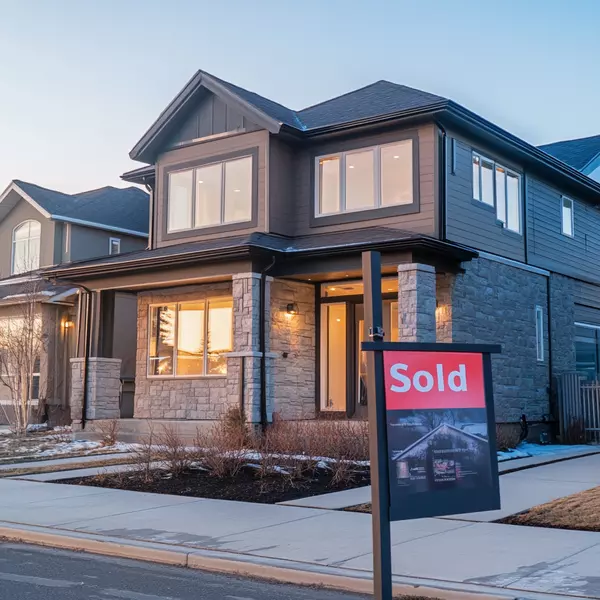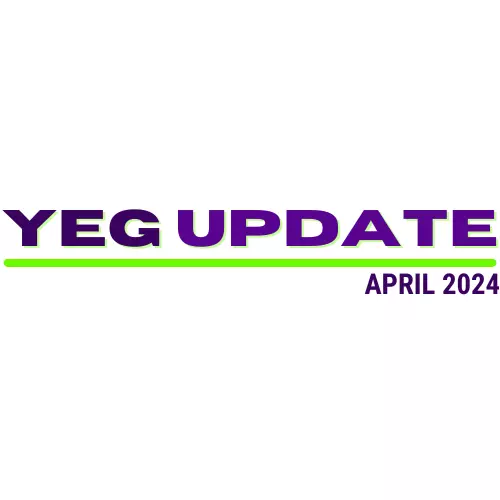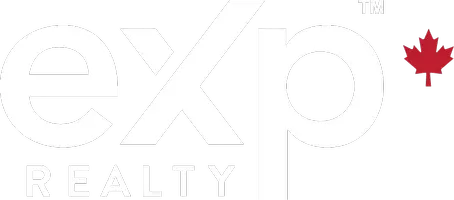

Navigating Financial Pressures as a First-Time Home Buyer in Edmonton
Introduction Buying your first home in Edmonton can feel like navigating a labyrinth of financial pressures. Between rising housing prices, high mortgage rates, and additional costs, it’s no wonder many first-time buyers feel overwhelmed. Understanding these pressures and knowing how to manage them is crucial for a smooth home-buying experience. In this guide, we’ll walk you through the financial challenges and provide actionable strategies to help you make informed decisions. Understanding the Financial Pressures Rising Housing Prices Edmonton’s housing market has seen a significant increase in average home prices, now approximately $441,350. This trend places added pressure on first-time buyers to adjust their budgets and expectations. The rising costs can make it seem like the dream of homeownership is slipping away. Here is an example of less expensive homes between $300,000 and $360,000. High Mortgage Rates High mortgage rates contribute significantly to the financial strain. Higher interest rates mean higher monthly payments, which can impact your overall budget. Shopping around for the best mortgage rates and considering fixed-rate options are essential to managing this challenge. Additional Costs Homeownership comes with more than just a purchase price. First-time buyers need to factor in property taxes, home insurance, closing costs, and potential maintenance expenses. These hidden costs can quickly add up, impacting your financial comfort. Budgeting and Pre-Approval Determining Your Budget Start by establishing a realistic budget. This should include not only the home price but also additional costs such as taxes, insurance, and maintenance. A well-defined budget helps prevent financial strain and ensures you’re looking at homes within your means. If you are looking for homes between $360,000 and $420,000 you will find it here. Getting Pre-Approved Securing a mortgage pre-approval is a crucial step. It provides clarity on how much you can borrow and shows sellers you are a serious buyer. However, it’s essential to use this as a guide rather than a limit, ensuring that your monthly payments are manageable within your budget. Leveraging Incentives and Programs Federal Programs for First-Time Home Buyers The First-Time Home Buyer Incentive can be a game-changer. This program helps reduce your monthly mortgage payments without increasing your down payment, making homeownership more affordable. A simple example is extending the amortization of your mortgage. Edmonton-Specific Programs Edmonton offers its own set of programs, such as the Edmonton First Place Program. This initiative defers the land portion of the mortgage, reducing initial costs for eligible buyers. Exploring these local resources can provide significant financial relief. Tax Breaks and Rebates Take advantage of available tax breaks and rebates, such as the GST/HST New Housing Rebate. These can help reduce the financial burden of buying a home and make the process more manageable. Improving Financial Health Enhancing Your Credit Score A higher credit score can lead to better mortgage terms. Focus on paying bills on time, reducing credit card balances, and managing debt effectively to improve your score. Saving for a Down Payment Aim to save more than the minimum down payment required. A larger down payment can reduce the amount of interest paid over the life of the mortgage and help you secure better loan terms. Choosing the Right Location Researching Neighborhoods When selecting a neighborhood, consider future growth and amenities. Some areas may offer better long-term value and affordability, aligning with your lifestyle and investment goals. Considering Infill Developments Infill developments can provide more affordable housing options in established areas. While they might come with higher initial prices, they often offer greater convenience and potential for future value appreciation. Hidden Costs and Long-Term Planning Understanding Additional Costs Be aware of hidden costs such as closing fees, legal fees, and moving expenses. These can add up quickly, so it’s important to budget for them as part of your overall home-buying plan. Planning for Future Resale Value Consider long-term factors like neighborhood development and future resale value when choosing a home. This foresight can help ensure that your investment remains sound and that you get the best value for your money. Edmonton-Specific Considerations Property Taxes and Land Title Registration Property taxes in Edmonton vary based on location and property size. Include these in your monthly expenses. Additionally, registering your land title involves certain fees and paperwork that must be factored into your budget. Market Trends and Neighborhood Selection Stay informed about Edmonton’s housing market trends. Understanding shifts from downtown to suburban areas can help you choose a neighborhood that fits your lifestyle and investment goals. Conclusion While the financial pressures of buying your first home in Edmonton are substantial, careful planning and strategic use of available resources can ease the burden. By budgeting wisely, leveraging government incentives, and improving your financial health, you can successfully navigate the challenges of the housing market. FAQs What is the average home price in Edmonton?As of recent figures, the average home price in Edmonton is approximately $441,350. How can I improve my credit score before buying a home?Pay bills on time, reduce credit card balances, and manage your debt to improve your credit score. What are the main benefits of the First-Time Home Buyer Incentive?This incentive helps reduce monthly mortgage payments without increasing your down payment, making homeownership more affordable. How much should I save for a down payment?Aim to save more than the minimum down payment to reduce overall interest and secure better loan terms. What are common hidden costs when buying a home?Common hidden costs include closing fees, legal fees, and moving expenses. Budget for these to avoid unexpected financial strain.
Read More

Understanding the New 30-Year Amortization for Edmonton's First-Time Home Buyers
Overview of Canada’s New 30-Year Amortization Program Starting on August 1, 2024, Canada introduced a new 30-year amortization program designed to ease the financial burden on homebuyers, particularly first-time buyers. This initiative is part of the government's broader strategy to improve housing affordability across the country. What Led to the Introduction of the 30-Year Amortization Program? Historical Mortgage Trends in Canada Historically, Canada has seen fluctuating mortgage terms, with 25-year amortization periods being the norm. However, with rising housing prices, there has been growing pressure to extend these terms to make homeownership more accessible. Government Initiatives to Support First-Time Buyers In response to these challenges, the Canadian government has implemented several programs aimed at first-time homebuyers. The 30-year amortization program is the latest in a series of measures designed to enhance affordability. Key Features of the 30-Year Amortization Program Who is Eligible for the Program? The program is open to first-time homebuyers who meet specific criteria, including income thresholds and credit requirements. How Does the Program Differ from Previous Mortgage Options? Unlike the traditional 25-year amortization, the 30-year option allows for lower monthly payments, although it does result in higher interest payments over the life of the loan. Advantages of a 30-Year Amortization for Homebuyers Lower Monthly Payments: What It Means for You One of the primary benefits of the 30-year amortization is the reduced monthly payment, which can make it easier for buyers to manage their finances. Long-Term Financial Planning: Pros and Cons While the lower payments offer immediate relief, buyers must consider the long-term implications, such as the total interest paid and the extended commitment. Potential Drawbacks of a 30-Year Amortization Impact on Total Interest Paid Over Time A longer amortization period means more interest paid over the life of the mortgage. Buyers need to weigh this against the benefits of lower monthly payments. Risk of Longer Debt Commitment Committing to a mortgage for 30 years can be daunting, especially with the uncertainties of the future financial landscape. The Effect on the Canadian Housing Market Predicted Trends in Real Estate Demand The introduction of this program is expected to increase demand for housing, particularly among first-time buyers who were previously priced out of the market. Impact on Housing Prices and Affordability While the program aims to make housing more affordable, it could also lead to increased competition, driving prices higher in some markets. Real-Life Examples: How Homebuyers Are Benefitting Case studies show that first-time buyers are finding it easier to enter the market with extended amortization, though the long-term financial impact varies. Final Thoughts on the 30-Year Amortization Program Overall, Canada’s new 30-year amortization program offers both benefits and challenges. It provides immediate relief in the form of lower monthly payments but comes with the trade-off of higher long-term costs. FAQs What Should First-Time Buyers Consider?First-time buyers should carefully assess their long-term financial goals and consider the trade-offs between lower payments and higher overall interest. Can I Switch to a 30-Year Amortization if I Already Have a Mortgage?No, right now that is not available in the current program. How Does This Program Compare to Other Mortgage Options?Compared to shorter amortization periods, the 30-year option offers lower payments but at the cost of increased interest over time. What Are the Long-Term Implications of Choosing a 30-Year Amortization?Buyers should consider the impact on their long-term financial health, including retirement planning and overall debt levels. Is This Program Right for Everyone?The 30-year amortization program is not suitable for everyone. Buyers should consult with a financial advisor to determine if it aligns with their financial goals.
Read More

Understanding Edmonton's Housing Market in April 2024
Overview of Edmonton's Housing Market in April 2024 Edmonton's housing market in April 2024 demonstrates resilience amidst fluctuating economic conditions. Supported by moderate economic growth and a stable employment landscape, the market has witnessed subtle price adjustments and a consistent demand fueled by population growth. Economic Factors Influencing the Housing Market Interest Rates and Their Impact on Real Estate in Edmonton The current low interest rates have bolstered buying power, enabling more Edmontonians to consider homeownership. However, potential rises could dampen this trend. Population Growth and Housing Demand in Edmonton Edmonton's growing population, driven by both natural increase and immigration, continues to pressure the housing supply, maintaining a seller's market atmosphere. Analysis of Housing Market Trends in Edmonton Price Trends in Edmonton April 2024 April saw a slight increase in median home prices, attributed to the low inventory and sustained demand. The average price of a single-family home in Edmonton now stands at approximately $450,000. Sales Volume and Market Activity Sales have remained robust, with a notable interest in suburban areas, reflecting a trend towards more spacious living accommodations post-pandemic. Future Outlook for Edmonton's Housing Market Predictions for the Rest of 2024 Analysts predict a stable market with the potential for slight price increases as Edmonton continues to attract investors due to its relative affordability compared to other major Canadian cities. Long-term Trends and Market Health The long-term outlook remains positive with gradual appreciation expected. This is bolstered by Edmonton's strategic economic initiatives and ongoing infrastructure improvements. Challenges Facing Edmonton's Housing Market Affordability Issues Despite the market's stability, affordability remains a concern for many, particularly first-time buyers and low-income families. Supply Constraints and Construction Delays Supply issues, exacerbated by delays in construction due to material shortages and logistical challenges, continue to pose significant hurdles. Opportunities in the Edmonton Housing Market Investment Hotspots Areas such as Windermere and The Orchards are becoming increasingly popular for their new developments and promising returns on investment. Emerging Neighborhoods for Homebuyers and Investors Neighborhoods like Griesbach and Laurel are drawing attention for their community-focused planning and family-friendly amenities. Advice for Homebuyers and Investors Strategies for Navigating the Edmonton Market Prospective buyers are advised to act swiftly on desirable properties and consider long-term potential rather than short-term gains. Tips for First-time Homebuyers First-time buyers should explore various financing options and consider properties in emerging neighbourhoods to maximize their investment. The Role of Government and Policy in Shaping the Market Recent Policy Changes and Their Effects Recent governmental initiatives aimed at improving housing affordability and accelerating construction have begun to show positive effects. Government Initiatives Supporting Housing Programs like the First-Time Home Buyer Incentive help mitigate the upfront costs of purchasing a home, making it more accessible for young families. Conclusion: The Future of Housing in Edmonton As Edmonton continues to grow, both in population and economically, the housing market is expected to remain a vital component of the city's overall health and prosperity. With careful planning and continued governmental support, Edmonton can ensure a balanced and inclusive housing market for all its residents. FAQs How do I choose a real estate agent to work with? Select an agent with strong local market knowledge, a good track record, and one who understands your specific needs and preferences. If you are selling your home, make sure they have a dynamic marketing plan that will guarantee that your home will be exposed to thousands of potential buyers every week. If I find a house I like, how do I make an offer? Work with your real estate agent to submit a competitive offer based on market analysis, your budget, and other considerations like contingencies. Should I sell my home before buying a new one? This decision depends on your financial situation and market conditions. Selling first might reduce financial stress, whereas buying first might ensure you secure your desired home. What should I know about closing costs as a buyer? Closing costs can include loan origination fees, appraisal fees, title searches, title insurance, surveys, taxes, deed-recording fees, and credit report charges. How can I determine my budget for buying a house? Consider your total income, existing debts, credit score, available savings for a down payment, and additional costs like property taxes and homeowners insurance.
Read More

East YEG Real Estate Market: A Comprehensive Analysis of November 2023 Stats
The real estate landscape in East YEG, Edmonton, has always been dynamic, and the stats for November 2023 further validate this trend. As an experienced Realtor in this region, I am excited to delve into the latest figures and what they mean for homeowners, buyers, and investors. This comprehensive analysis aims to provide a clear understanding of the current market dynamics, highlighting key changes and trends over the past year. Listing Trends: An Uptick in Properties November 2023 witnessed a significant increase in property listings compared to the same period in 2022. With 63 properties listed, there's an 18.87% surge from the 53 listings in November 2022. This rise indicates a more active market, potentially fueled by increased homeowner confidence or a shift in market conditions favoring sellers. While the year-to-date (YTD) volume for 2023 shows a slight decrease of 3.37% with 1032 properties, compared to 1068 in 2022, the monthly increase is a positive sign for the market's momentum. 🌟 Unlock Comprehensive Market Insights! 🌟 🏡 Curious about the latest trends in East YEG's real estate market? Click on the image above to download our detailed November 2023 Market Report. Gain an in-depth understanding of the evolving real estate landscape, including key statistics, insightful analyses, and future projections that can guide your property decisions. Don't miss out on this invaluable resource – your journey to mastering East YEG's real estate market begins here! 👉 Click the image now for exclusive access! Sales Volume: A Remarkable Growth The sales volume in November 2023 has been particularly impressive. The month saw 47 sold properties, marking an 80.77% jump from the 26 sold in November 2022. This robust growth in sales volume could be attributed to various factors, such as competitive pricing, improved marketing strategies, or a shift in buyer preferences. However, the YTD figures tell a different story, with a 9.44% decrease in 2023 (547 sales) compared to 2022 (604 sales). This contrast between monthly and YTD figures may point to fluctuating market conditions throughout the year. Pricing Insights: Adjusting Averages The average sales price in November 2023 stood at $458K, a slight dip of 3.51% from November 2022's average of $475K. This reduction could reflect a market adjusting to various external pressures, possibly including economic factors or changes in buyer demand. The YTD average sales price also saw a decrease, with 2023's figure at $460K compared to 2022's $482K, marking a 4.54% decrease. These pricing trends are crucial for both buyers and sellers, as they influence decision-making and market strategies. Ask to Sell Ratio: A Closer Look The ask-to-sell ratio in November 2023 was 0.961, slightly up by 0.33% from 0.958 in November 2022. This ratio, a key indicator of market balance, shows a marginal increase, suggesting that sellers are getting closer to their asking prices. The YTD average ask-to-sell ratio, however, decreased by 1.01% in 2023 (0.974) compared to 2022 (0.983). This shift implies a slight tilt towards buyers in negotiations over the year. Do you want specific information on your Neighbourhood? East YEG, a vibrant and dynamic region in Edmonton, is comprised of several distinct neighborhoods, each offering its unique charm and living experience. This area includes Avonmore, Bonnie Doon, Capilano, Forest Heights, Fulton Place, Gold Bar, Holyrood, Idylwylde, Kenilworth, King Edward Park, Ottewell, Strathern, and Terrace Heights. For those interested in exploring real estate opportunities in these areas, you can conveniently click on the neighborhood names to access current active listings and actual sold data for homes in these neighborhoods. This feature provides a detailed and up-to-date snapshot of the local housing market, allowing you to make informed decisions whether you're considering buying, selling, or simply keeping an eye on the market trends in East YEG. Interpreting the Trends for East YEG The November 2023 statistics for East YEG’s real estate market present a mixed bag of trends, each with implications for different market participants: For Sellers: The increase in listings and sales volume, along with a fairly stable ask-to-sell ratio, suggests a favorable market. However, the slight decrease in average prices calls for strategic pricing and effective marketing to maximize returns. For Buyers: The reduced average sales price and a marginal decrease in the YTD ask-to-sell ratio indicate opportunities to negotiate favorable deals, especially considering the increased inventory. For Investors: The fluctuating trends highlight the need for thorough market analysis and strategic decision-making. The growth in sales volume and listings suggests a potentially lucrative market for investment, provided the pricing dynamics are navigated wisely. Hottest Homes in East YEG right now! Conclusion and Outlook As we reflect on these statistics, it's clear that the East YEG real estate market is evolving. The current trends underscore the importance of staying informed and adapting to changing market conditions. For sellers, focusing on impactful marketing and pricing strategies will be key. Buyers can leverage the slight market softening to find valuable deals. And for investors, carefully analyzing these trends will be crucial in making informed decisions. In conclusion, understanding these market dynamics is vital whether you're looking to sell, buy, or invest in East YEG. With over 25 years of experience in the Edmonton real estate market, I am here to guide you through these complexities, ensuring your real estate decisions are informed, strategic, and aligned with your goals. Let's navigate this vibrant market together, leveraging these insights for your success. [Note: This blog is an analysis based on the provided real estate statistics for East YEG, Edmonton, as of November 2023. It is intended for informational purposes and should not replace professional real estate advice.] FAQ's for the East YEG Real Estate Market: A Comprehensive Analysis of November 2023 Stats Report What does the increase in listings in East YEG indicate about the current real estate market? Answer: The increase in property listings in November 2023 compared to November 2022 suggests a more active market in East YEG. This could be due to a variety of factors, including higher seller confidence and a possible shift in market conditions that favor sellers. It indicates a robust market where homeowners feel encouraged to list their properties. Why is there a decrease in the average sales price in East YEG, and what does it mean for buyers and sellers? Answer: The decrease in the average sales price in November 2023, as compared to the previous year, might be influenced by economic factors, changes in buyer demand, or a larger number of lower-priced homes being sold. For sellers, it means pricing their property competitively is crucial, while buyers might find more negotiating power and potentially better deals in the current market. How significant is the change in the ask-to-sell ratio from 2022 to 2023, and what does it signify? Answer: The slight increase in the ask-to-sell ratio in November 2023 indicates that sellers are achieving sales prices closer to their asking prices. Although the year-to-date change shows a slight decrease, it still reflects a relatively balanced market, where neither buyers nor sellers have a distinct advantage. With the increase in sales volume but a decrease in year-to-date volume, what should potential investors consider? Answer: Investors should note that while the monthly sales volume has increased significantly, the year-to-date volume shows a decrease. This suggests a market with fluctuating conditions, emphasizing the importance of timing and market analysis in investment decisions. It's crucial to understand the local market trends and their implications for long-term investment strategies. What strategies should home sellers in East YEG adopt in light of the current market trends? Answer: Given the slight decrease in average sale prices and the competitive nature of the market, sellers should focus on strategic pricing and effective marketing. Utilizing advanced marketing techniques, both innovative and traditional, will help in maximizing exposure and achieving the best possible sale price. Additionally, understanding the specific dynamics of the East YEG market is key to positioning their property effectively.
Read More
Categories
- All Blogs (22)
- downsizing (2)
- Eco-friendly Homes (1)
- Edmonton Bylaws (2)
- Events & Community News (4)
- First Time Home Buyer (4)
- Gardening & Landscaping (1)
- Home Buying Tips (14)
- Home Insurance (2)
- Home Selling Tips (6)
- How to (9)
- increase home value (8)
- Interior Design (1)
- Local Market Trends (8)
- market Influences (11)
- Market Update (9)
- Migration (2)
- Mortgage Info (2)
- Moving & Relocation (8)
- Neighborhood Profiles (4)
- Real Estate FAQs (15)
- Real Estate Investment (1)
- Real Estate Laws & Regulations (2)
- Technology in Real Estate (2)
Recent Posts










